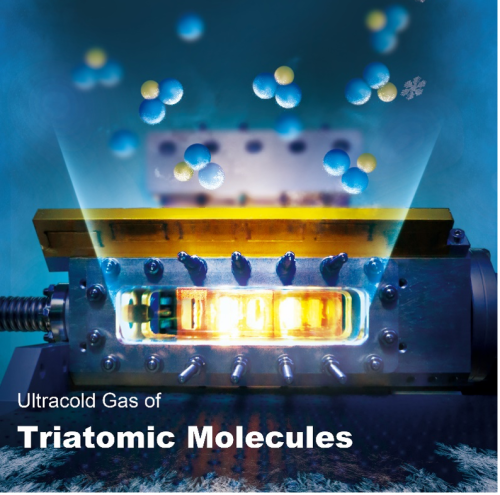
Recently, a research team led by Prof. PAN Jianwei and Prof. ZHAO Bo from the University of Science and Technology of China (USTC) of the Chinese Academy of Sciences (CAS), used adiabatic magneto-association to create ultracold gas of triatomic molecules with high phase-space density from degenerate mixture of 23Na40K molecules and 40K atoms for the first time. This work was published in Science.
The use of highly controllable ultracold molecules in the simulation of complex chemical reactions allows for comprehensive study of complex system. Direct cooling of ultracold molecules is challenging due to the complexity of the vibrational and rotational energy levels in molecules. A method has been proposed for coherently converting ultracold atoms into ultracold molecules. Diatomic molecules, which benefit from high phase-space density and low temperature and can be coherently transferred to the ground state using laser, have been created using the Feshbach resonance.
After successfully creating ultracold diatomic molecules, researchers have been discussing the possibility of using coherent conversion to produce ultracold triatomic molecules. In 2019, a team from USTC observed the Feshbach resonance between ultracold 23Na40K molecules and 40K atoms. Based on this, the association of ultracold triatomic molecules in the mixtures of 23Na40K molecules and 40K atoms was accomplished using radio frequency pulses by researchers from USTC and the Institute of Chemistry of CAS. However, due to the short lifetime and low conversion efficiency of triatomic molecules, only evidence of association through the loss of diatomic molecules and atoms could be obtain.

Creating ultracold gas of triatomic molecules through magneto-association. (Image by Prof. PAN Jianwei’s team)

86-10-68597521 (day)
86-10-68597289 (night)

52 Sanlihe Rd., Xicheng District,
Beijing, China (100864)

